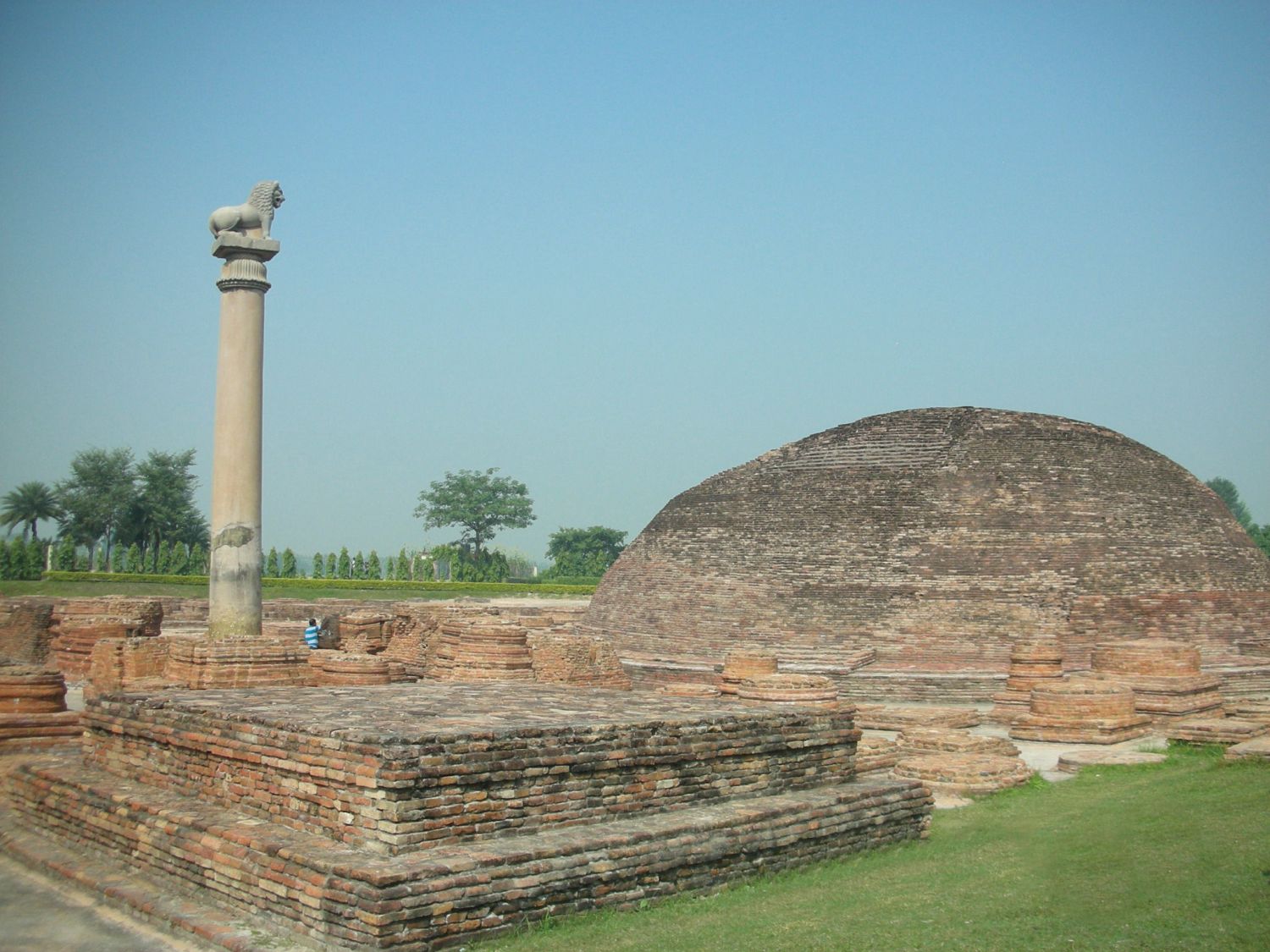Special Topics
Get to Know the Buddhist Holy Lands: Vaishali and Nalanda
7. Announcement of Parinirvana in Vaishali Vaishali (meaning "vastness"), built by the Licchavi clan, was a great power in northern India in the 6th century BCE. The Buddha used to wander about to preach the Dharma and thus, many people held Buddhist beliefs here. Many Buddhist events took place in Vaishali. For example, the Buddha began to formulate the Pratimoksha in Vaishali, and the first precept for monks - abstinence from sexual behaviour--was established here. As for the third and fourth precepts for monks - refraining from killing and false speech – these were also laid down in Vaishali. It was also in Vaishali that the Buddha expounded the Vimalakirti Sutra and announced his Parinirvana.
Vaishali (meaning "vastness"), built by the Licchavi clan, was a great power in northern India in the 6th century BCE. The Buddha used to wander about to preach the Dharma and thus, many people held Buddhist beliefs here. Many Buddhist events took place in Vaishali. For example, the Buddha began to formulate the Pratimoksha in Vaishali, and the first precept for monks - abstinence from sexual behaviour--was established here. As for the third and fourth precepts for monks - refraining from killing and false speech – these were also laid down in Vaishali. It was also in Vaishali that the Buddha expounded the Vimalakirti Sutra and announced his Parinirvana.The Bhikkhuni Sangha was also founded in Vaishali. After attaining enlightenment, the Buddha returned to his hometown Kapilavastu to preach the Dharma. The Buddha's aunt Mahaprajapati Gotami and more than 500 devout women of the Sakya clan wanted to become nuns, so they came to Vaishali to ask the Buddha to allow them to join the sangha and study the Dharma. However, the Buddha repeatedly declined. With Ananda's heartfelt intercession, the Buddha finally agreed after thorough consideration, and Mahaprajapati Gotami thus became the first bhikkhuni in history.
8. Nalanda, Cradle of Buddhist learning
The oldest university in the world is in Nalanda, India. Nalanda, meaning "giving without tiredness", was a name given by its people to a charitable king there, according to Master Xuanzang's investigation.
In the 5th century, King Kumaragupta of the Gupta Empire established the Nalanda Monastery. Up until the 7th century, with the strong support of King Harsha (Shīlāditya), the Nalanda Monastery had become large in scale, rich in literature and with more than 4,000 resident monks, hence being the largest Buddhist monastery in India at that time. With eminent monks and accomplished masters gathering together, as well as scholars coming out in large numbers, Nalanda had also become the then global Buddhist study center.
In the 7th century, Master Xuanzang came to the Nalanda Monastery to study Yogacarabhumi-sastra and other sutras and treatises under Master Jiexian (Silabhadra) for five years. After practicing and studying in other places for many years, Master Xuanzang returned to the Nalanda Monastery to deliver lectures on important texts of the Consciousness-Only School (Yogacara School of Buddhism).
Based on his long journey and 14-year memories of studying Buddhism in India, Master Xuanzang wrote the Great Tang Records on the Western Regions, which became an important work for the Chinese of the time to understand India, in addition to serving as an important reference for the identification of historic ruins of India today.
Pilgrimage to Sacred Sites to Recollect the Saints
Pilgrimage: Following the Footsteps of the Awakened Ones - the Origin of the Holy Sites and the Transformation of the Forms of Pilgrimage
Get to Know the Buddhist Holy Lands: Lumbini and Bodhgaya
Get to Know the Buddhist Holy Lands: Sarnath and Kushinagar
Get to Know the Buddhist Holy Lands: Rajgir and Sravasti
Get to Know the Buddhist Holy Lands: Vaishali and Nalanda
Resource: Issue 368 of Life Magazine, Dharma Drum Publishing Corporation
Photos: Issue 368 of Life Magazine, Dharma Drum Publishing Corporation
Translation: James
Editing: Dharma Drum Mountain Editing Team, Keith Brown
